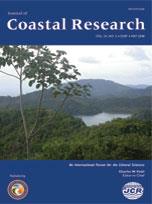Land use changes have been shown to alter the balance of nutrient and mineral sources and sinks to coastal systems. These shifts are often preserved in sediment records. In Apalachicola Bay, productivity is dependent on nutrient loading from the Apalachicola-Chattahoochee-Flint (ACF) river basin; alterations to ACF watershed flow by management activities coupled with increased marine water inundation associated with rising sea level threaten this productivity. The objective of this research was to evaluate past changes in nutrient loading to Apalachicola Bay as recorded in sediment history and determine if these changes could be associated with both anthropogenic and natural alterations in the system. Sediment cores from three sites in the bay were collected and analyzed for organic carbon (C), total nitrogen (N), and total phosphorus (P) concentrations and δ13C and δ15N stable isotopic abundances. The three sites are located at the river mouth (S1), mid-bay (S2), and in the northeastern region of the bay (S3). Carbon and nitrogen concentrations, ratios, and stable isotopes coupled with grain-size shifts for the bay suggest a decrease in river organic matter supply and a change in sediment clay content supply and/or distribution for the bay. Overall, the applied indicators suggest an increase in marine influence on the organic matter in the estuary. These shifts appear to be associated with Apalachicola River management practices coupled with sea-level rise in the Gulf of Mexico.
How to translate text using browser tools
1 May 2008
Chronology of Sediment Nutrient Geochemistry in Apalachicola Bay, Florida (U.S.A)
Donatto Surratt,
Jennifer Cherrier,
Larry Robinson,
Jaye Cable
ACCESS THE FULL ARTICLE

Journal of Coastal Research
Vol. 2008 • No. 243
May 2008
Vol. 2008 • No. 243
May 2008
Apalachicola Bay
carbon isotopes
ecosystem history
nitrogen isotopes
nutrient sources
organic carbon
sediment




